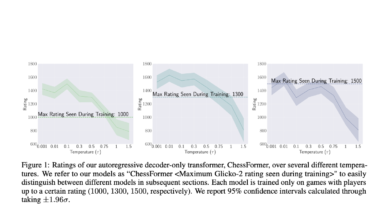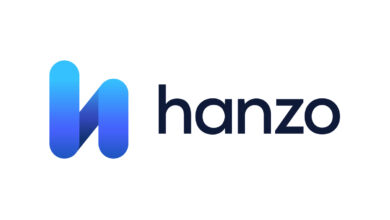Next ‘24 – Discover Financial Services sees Google Cloud’s Generative AI tooling as path to superior customer experience

Discover Financial Services is working with Google Cloud to build Generative AI applications that will complement the work of call center agents, with the aim of speeding up their time to resolution, and ultimately changing the way that it thinks about customer experience.
Discover owns and operates a number of well known brands that include Discover Bank, the Discover and Pulse networks, as well as Diners Club International. It has tens of millions of customers across its numerous brands and the organization brought in over $20 billion in revenue in 2023. However, as is the case with other companies in the financial services industry, Discover is finding that more and more of its services are moving online and that customers often have little to no reason to interact with the bank outside of a mobile application on their phone.
What this means is that when customers do need to speak to them, typically engaging with a call center agent on the telephone, it’s often for more complex requests, transactions or processes. Given the highly regulated nature of the industry, it’s unsurprising that these conversations in the call center can be long and require referencing various technical documentation.
This is where Discover sees the role of Generative AI, being built using Google Cloud’s platform, being particularly useful. I got the chance to speak with Szabolcs Paldy, SVP of Operations at Discover, about the applications that have been identified and built thus far, as well as what could possibly be in the pipeline for the future. Providing the context, he said:
Almost everything gets done digitally, so the job of the call center agent has become significantly more difficult the last several years. You don’t call anymore to ask, what is your balance? You can get that from the app very easily, you can get it from the digital assistant.
So what is happening is that the agents are getting more and more difficult questions, and those can be very intricate. So for our agents, the question is: how do they get to a seamless experience so that they can answer those questions without putting the customer on hold while they aren’t searching for the appropriate procedure that describes the specific detail?
Discover has worked with Google Cloud for a number of years, so there was an existing relationship there. The companies decided to collaborate to build Generative AI into Discover’s call center solutions, to see if it could be used to improve the experience for agents and customers, by training and tuning Large Language Models via Google’s Vertex platform. An automated acceptance testing tool was used to run hundreds of test cases with different parameters to identify the right responses with the highest accuracy and safety scores.
Paldy said that the aim of introducing Generative AI is not to extend the reach of digital assistants (for example, through increased automation), but rather aid the role of agents so that they have the information that they need, when they need it. He explained:
What we’ve tried to do is lift the workload from the agent and try to make their work a little bit easier, so they can be there and be attentive to the customer. One of the Generative AI applications, for example, is to help agents searching for procedures.
Instead of them trying to read through those, where the customer potentially gets put you on hold for two or three minutes while they do that, the agent actually gets a summary generated with specific citations to the actual documents themselves.
It’s subtle, but it’s a game changer. That can be done in a few seconds. It keeps the agent in the conversation flow so they can react to the customer. If they need to go into the nitty gritty, they can follow the links to actually get to a document, but these are really fundamental changes that will shift the expectations for customers and for customer service agents. We want to invest in that and we want to be at the forefront of that.
Customer choice
The two key themes of the Generative AI use cases that Discover is focusing on include:
-
Intelligent document summarization – Vertex AI will analyze and summarize complex policies and procedures, providing agents with information at their fingertips and rapid insight to answer customer needs.
-
Real-time search assistance – using natural language, agents can access vast knowledge bases to suggest relevant information during live interactions, so they spend less time searching and more time helping customers.
However, Paldy said that Discover isn’t looking to push customers into digital channels if they don’t want to be there. He explained:
Generative AI has great capabilities, for example, for rewriting those procedures, in a little bit more agent friendly way. What we are actually focusing on is bridging that gap. We are focusing on making the agent’s life a little bit easier, as opposed to extending the digital assistant.
We want to be there for the customer in whatever way they need us. We try not to channel the customers to get it done in the digital assistant. If they like the digital assistant, that’s great, but they can ask for an agent at any time.
What we are trying to do though is, when you get there, how can the agent really deliver a resolution that you are looking for? Especially after you came via some digital assistant and failed to do what you needed to do. It’s really to enable the human agents and make them a little bit more responsive and capable.
And the benefits are already being delivered. Despite only being rolled out in early 2024, results have shown that agents can reduce call handle time, and improve policy and procedure search time, by as much as 70 per cent. Discover believes that once this is deployed further, it will translate to significant customer experience and productivity gains.
Governance is key
The introduction of Generative AI into enterprise processes is very new still and many organizations are learning as they go. In many ways, the use of Generative AI, which is often conversational in nature, abstracts users away from the process layer itself. With this in mind, the technology could have a huge impact on organizations and culture, as companies think about how to operate differently. Paldy agreed and said:
It’s interesting that this is probably the first technology where the actual technological change and requirements are significantly less than the organizational changes.
Discover has been working with Google on Generative AI for the last year, but the organization itself started preparing before then for its implementation. Its approach has been to create a Generative AI Governance Council, which is essentially a cross functional team made up of people from legal, compliance, data science, information security, technology development, as well as business leads. This Council is in place to help guide the development of Generative AI use cases. Paldy said:
We can build a safety net around some of the ideas that come up. With the Council we can actually scale the experimentation and we can also scale moving the successful ideas into production, because everybody who is important is already informed.
We can catalog the ideas, we ensure that they’re risk based, and we can try to identify those that we can go after. And then we can build a common framework on: how do we log the inputs and the outputs? How do we measure the efficacy? That is a lot of work.
Paldy said that for Discover, setting up Vertex and reaching Google Cloud’s Gemini model through the platform was “really easy” and that the team at the vendor helped Discover build automated testing capabilities, so that it could better tune the model and apply its specific corporate data. But getting everybody on side at the company and building a framework to evaluate what would work effectively, required a fair amount of organizational change.
Focusing on speciality knowledge
For Discover, according to Paldy, using the technology was the easy part. He said that the amount of engineering and technical development wasn’t huge and that with everything made available via APIs, product owners can load data and configure without much engineering input.
However, part of the organizational and process change has been building out the role of ‘speciality knowledge’ to enable the Generative AI and ensure that trust is built into the new systems. Paldy explained:
If you want to build a system that will help the agents receive a good summary of a procedure, you need experts who really understand the procedures. As you build the workflow, as you build a system that will enable the agent to ask a simple question, you really need to make sure that that summary is what you want it to be.
You need to build a lot of testing around it. That’s what the new workflow is. We’ve worked with the expert agents, we’ve worked with the technical writers who write the procedures themselves. You really have to look at the efficacy of the output.
That’s a lot of tuning and we incorporate that feedback. Some of these tools are really intuitive to directly change levers and pointers, using RAG to introduce your own data to fine tune, but you need those experts to tell you: ‘yes, this is better’. And then you need the governance framework, when you decide what is good enough.
Keeping human oversight
Whilst Discover has its Governance Council to help pick the use cases and guide adoption, the organization is keen to maintain human oversight once in production. For example, even if there is an agent procedure being used, there will still be legal and compliance approval on that procedure. Even at the agent level, whilst they might get some summarized information via Generative AI, it is still up to the agent whether or not to pass that information on or not. Paldy said:
The fact that it was done by, or with, the help of Generative AI is interesting, but it still gets the same human approval. So it’s a very safe application.
And the way we build it is you have your legacy tool and the new tool in front of you, and the agent has the opportunity to compare, to see the benefit and to see the efficacy.
Everybody’s trying to enter this space with a bit of a risk mindset. How can you safely approach it and how can you gain the trust of the end users? And most of the time the end users are still within your own enterprise. Something that you still have a very good control over and very strong measurements.
When asked if Discover would look to introduce end-to-end customer service AI tooling (for example, AI voice interactions and information generated by AI presented straight to the customer), Paldy said that whilst the promise is there, it’s a long way off in such a highly regulated industry, such as financial services. Commenting on the future role of Generative AI, he added:
To me, what it seems like right now is similar to when the App Store came out. We were all looking at it at the time, wondering: what is going to be the use case? Is it going to be a little toy or is it going to be a banking mobile app that really enables you to essentially have access to everything that the bank can do.
“I just don’t think we know yet. I think everybody has high hopes and everybody tries to moderate those. This can be very transformational, but the key at this point is governance. A very solid framework around, what are we testing? What is failing? What is successful? Why is it successful? And just moving incrementally.



